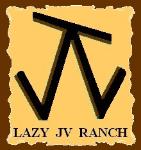
| Painted Desert Sheep |
| How different Hair Sheep Breeds began |















| A HISTORY The Corsican Group of Sheep (Painted Desert, Texas Dall, Black Hawaiian, American Blackbelly, Desert Sand, and sheep referred to as Corsicans) are actually the result of initial crosses decades ago between the shedding, European Mouflon Sheep (Ovis musimon, native to Corsica and Sardinia) with a wide range of more well known "wool" breeds of sheep including: Horned Rambouillet, Churro, Merino, and Jacob. At times, some of these crosses also included a hair or shedding sheep called the Barbados Blackbelly (Ovis aries) which were imported from the Caribbean island of Barbados, West Indies with bloodlines originally coming from Africa. One of the very first crosses happened in the mid 1900’s at the YO Ranch in Texas between Mouflon Ewes and Rambouillet rams resulting in beautiful snowy white, shedding sheep now known as the Texas Dall. The two lambs which were produced by the Rambouillet X Mouflon cross were found by Bob Snow of the Y.O. Ranch and were the first Texas Dalls. Mouflon Sheep are found running wild in a few locations throughout the world but have dwindling populations in some places. European Mouflon are native to Corsica and Sardinia. These sheep are considered by many to be one of the two original wild sheep from which the domestic breeds of sheep descended while other research points toward Mouflon Sheep being a domesticated sheep that grew to be feral. However their beginnings, Mouflon sheep are a shedding sheep, shedding their thicker winter coat in the Springtime which seems to be more like the first sheep. Some research indicates that the need for shearing sheep (because the “wool” sheep do not naturally shed their wool) is a result of selective breeding through the years by breeders to increase and improve wool for use in fabrics. Eventually, Mouflons made their way into several zoos in the United States. After several years, the zoos released some of the Mouflons to large ranches with a concentrated release in Texas. Here in the United States,after 1946, the wild Mouflon Sheep crossed with the more well known wool sheep breeds as well as the Barbados Blackbelly Sheep and the Corsican Group of Sheep were born. Originally, these Mouflon, and Mouflon cross sheep, were primarily used for "Trophies" due to the rams' beautiful horns. As the popularity of the sheep increases, the focus has become on achieving recognition for these sheep for other markets such as meat, show, pasture/fenceline clearing, etc., and for simply being unique sheep deserving of recognition as a breed. BREED RECOGNITION As with other breeds of sheep and even other animals, Texas Dalls, Black Hawaiians, Desert Sands, Corsicans, American Blackbelly and Painted Desert Sheep started out as hybrids or composites of 2 or more different breeds - with one parent being the Mouflon Sheep. Once the special characteristics of these wonderful sheep became more popular, efforts to get these sheep recognized as a unique and individual breed were underway by dedicated breeders. In 1997, a Painted Desert registry was started in Texas in order to promote recognition for the Painted Desert Sheep as being a unique sheep deserving of more than it‘s humble origins. In 2005, the Barbados Blackbelly Sheep Association, International, created a class for the American or Texas Blackbelly which has led to an increase in education and recognition about the breed who is generally a Mouflon X Barbados Blackbelly X Ramboulliet sheep. In 2009 the United Horned Hair Sheep Association, Inc. became an official non- profit organization dedicated to promoting and providing education about the breeds of sheep it represents: Painted Desert, Texas Dall, Black Hawaiian, Desert Sand, Corsican, and Mouflon. Click HERE to learn more about UHHSA, Inc. |

